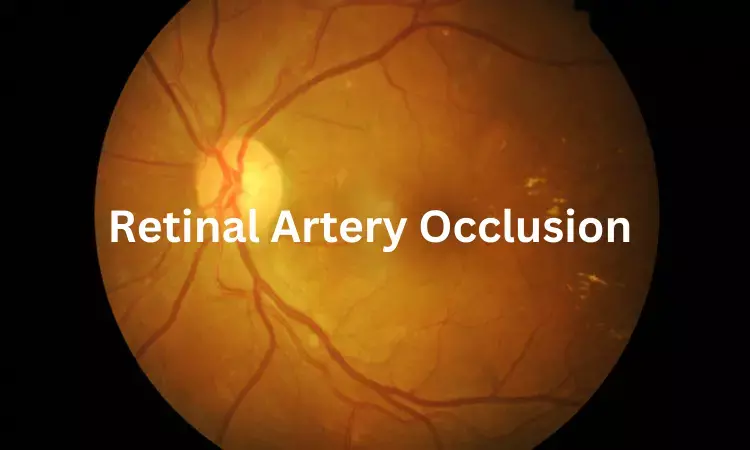- Home
- Medical news & Guidelines
- Anesthesiology
- Cardiology and CTVS
- Critical Care
- Dentistry
- Dermatology
- Diabetes and Endocrinology
- ENT
- Gastroenterology
- Medicine
- Nephrology
- Neurology
- Obstretics-Gynaecology
- Oncology
- Ophthalmology
- Orthopaedics
- Pediatrics-Neonatology
- Psychiatry
- Pulmonology
- Radiology
- Surgery
- Urology
- Laboratory Medicine
- Diet
- Nursing
- Paramedical
- Physiotherapy
- Health news
- Fact Check
- Bone Health Fact Check
- Brain Health Fact Check
- Cancer Related Fact Check
- Child Care Fact Check
- Dental and oral health fact check
- Diabetes and metabolic health fact check
- Diet and Nutrition Fact Check
- Eye and ENT Care Fact Check
- Fitness fact check
- Gut health fact check
- Heart health fact check
- Kidney health fact check
- Medical education fact check
- Men's health fact check
- Respiratory fact check
- Skin and hair care fact check
- Vaccine and Immunization fact check
- Women's health fact check
- AYUSH
- State News
- Andaman and Nicobar Islands
- Andhra Pradesh
- Arunachal Pradesh
- Assam
- Bihar
- Chandigarh
- Chattisgarh
- Dadra and Nagar Haveli
- Daman and Diu
- Delhi
- Goa
- Gujarat
- Haryana
- Himachal Pradesh
- Jammu & Kashmir
- Jharkhand
- Karnataka
- Kerala
- Ladakh
- Lakshadweep
- Madhya Pradesh
- Maharashtra
- Manipur
- Meghalaya
- Mizoram
- Nagaland
- Odisha
- Puducherry
- Punjab
- Rajasthan
- Sikkim
- Tamil Nadu
- Telangana
- Tripura
- Uttar Pradesh
- Uttrakhand
- West Bengal
- Medical Education
- Industry
Higher risk of stroke, MI and death post Retinal Artery Occlusion: JAMA

Retinal artery occlusion (RAO) refers to blockage of the retinal artery carrying oxygen to the nerve cells in the retina at the back of the eye. The lack of oxygen delivery to the retina may result in severe loss of vision. Usually patients with higher risk if you are older or have high blood pressure, glaucoma, or diabetes.
A new study found an increased risk of subsequent death and vascular events, including stroke and myocardial infarction, in patients post-RAO compared with matched controls, although the risk was lower than previously reported within 1 month of an RAO diagnosis. The study is published in JAMA Opthalmology. These results support awareness of potentially elevated risk of death, myocardial infarction, and stroke in patients after RAO, emphasizing that multidisciplinary evaluation and long-term follow-up should be considered for these patients.
Researchers conducted a retrospective cohort study used aggregated electronic health records from January 1, 2003, through April 14, 2023, from TriNetX, a network with data from more than 111 million patients. Patients with RAO and a cataract control group were identified and matched for age, sex, race, and comorbidities, including hypertension, diabetes, hyperlipidemia, and smoking status. Patients were excluded if they had a stroke or MI within 2 years before the diagnosis of RAO or cataract. International Statistical Classification of Diseases and Related Health Problems, Tenth Revision, diagnosis code for RAO or age-related cataract. Rate of death, stroke, and MI at 2 weeks, 30 days, 1 year, 5 years, and 10 years after RAO compared with matched controls.
The key findings of the study are
• A total of 34 874 patients with at least 1 year of follow-up in the RAO cohort. The mean (SD) age at the RAO event was 66 (15.2) years.
• The rate of death after RAO diagnosis was higher than after cataract diagnosis at 2 weeks (0.14% vs 0.06%), 30 days (0.29% vs 0.14%). 1 year (3.51% vs 1.99%), 5 years (22.74% vs 17.82%), and 10 years (57.86% vs 55.38%).
• Risk of stroke after RAO was higher at 2 weeks (1.72% vs 0.08%), 30 days (2.48% vs 0.18%), 1 year (5.89% vs 1.13%), 5 years (10.85% vs 4.86%), and 10 years (14.59% vs 9.18%).
• Risk of MI after RAO was higher at 2 weeks (0.16% vs 0.06%), 30 days (0.27% vs 0.10%), 1 year (1.66% vs 0.97%), 5 years (6.06% vs 5.00%), and 10 years (10.55% vs 9.43%).
Researchers concluded that “This study showed an increased risk of death, stroke, and MI in patients with RAO at both short-term and long-term intervals after RAO compared with a matched control population diagnosed with cataract. These findings suggest a potential need for multidisciplinary evaluation and long-term systemic follow-up of patients post-RAO.”
Reference: Wai KM, Knapp A, Ludwig CA, et al. Risk of Stroke, Myocardial Infarction, and Death After Retinal Artery Occlusion. JAMA Ophthalmol. Published online October 26, 2023. doi:10.1001/jamaophthalmol.2023.4716.
MSc. Neuroscience
Niveditha Subramani a MSc. Neuroscience (Faculty of Medicine) graduate from University of Madras, Chennai. Ambitious in Neuro research having worked in motor diseases and neuron apoptosis is interested in more of new upcoming research and their advancement in field of medicine. She has an engrossed skill towards writing and her roles at Medical dialogue include Sr. Content writer. Her news covers new discoveries and updates in field of medicine. She can be reached at editorial@medicaldialogues.in
Dr Kamal Kant Kohli-MBBS, DTCD- a chest specialist with more than 30 years of practice and a flair for writing clinical articles, Dr Kamal Kant Kohli joined Medical Dialogues as a Chief Editor of Medical News. Besides writing articles, as an editor, he proofreads and verifies all the medical content published on Medical Dialogues including those coming from journals, studies,medical conferences,guidelines etc. Email: drkohli@medicaldialogues.in. Contact no. 011-43720751


